Australia’s COVID-19 death toll rises in NSW, SA, Tasmania amid warning over returning passengers
The nation’s coronavirus death toll has risen to 59 as Chief Medical Officer Brendan Murphy says Aussies returning on an evacuation flight will be a driver for infection rates.
Coronavirus
Don't miss out on the headlines from Coronavirus. Followed categories will be added to My News.
Australia’s COVID-19 death toll has risen to 59 as Chief Medical Officer Brendan Murphy says Aussies returning on an evacuation flight will be a driver for infection rates.
NSW has recorded another coronavirus death – a man in his 80s, who had been in close contact with someone diagnosed with the virus.
The man had no link to the Ruby Princess cruise ship, NSW health authorities have confirmed.
In Tasmania, a woman in her 70s died at the North-West Regional Hospital in Burnie, Premier Peter Gutwein said.
In Adelaide, a 74-year-old man – a patient at the Royal Adelaide Hospital – has died as well, South Australia Health confirmed early Sunday.

“Our thoughts are with his family and friends,” SA Health said.
The news comes as Chief Medical Officer Brendan Murphy said he expected Australians returning to Melbourne on an evacuation flight from Uruguay on Sunday would be a driver for the national infection rate in the next week.
“There is no place in the world I would rather be than Australia at the moment,” he said.
“Having said that … we cannot become complacent. We still have some community transmission.
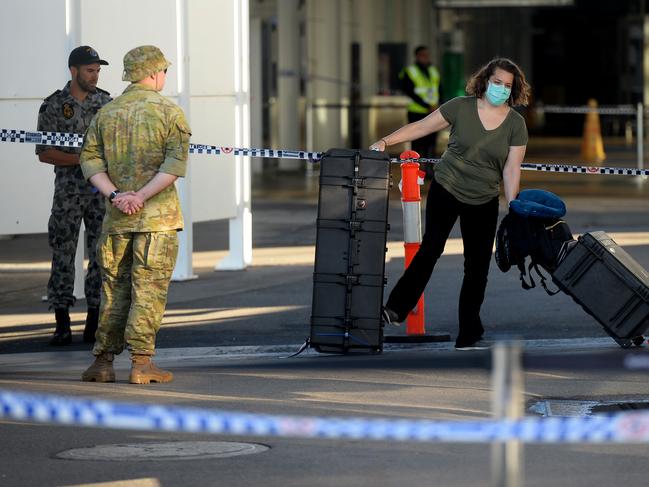
“We are in a good place … but we have to maintain that good place.
“We will start to see a whole different way we interact, even when this is over, in terms of hand hygiene and distancing.
“The single biggest reason why we have not had a terrible outbreak of community transmission is we in Australia have got on top of those cases, two-thirds of whom have still been our citizens returning back from overseas, and these public health workers, in each of the state and territory health departments, who have done that.”
BINGE ON STUDYING, NOT NETFLIX
Idle Australians in isolation have been told to swap binge watching Netflix for books as the price of short university courses and diplomas is slashed during the coronavirus pandemic.
Education Minister Dan Tehan said the government was dropping the cost of several online courses during the crisis to help newly-unemployed Australians retrain and gain skills in high demand sectors including health care.
“We are slashing the prices of degrees and diplomas in short courses, to enable people, rather than bingeing on Netflix, to be able to binge on studying,” Mr Tehan said.
“To binge on looking at a teaching degree, binge on looking at a nursing degree, an allied health degree.
“Areas where we need people, and we are going to need people as we emerge from the coronavirus pandemic.”
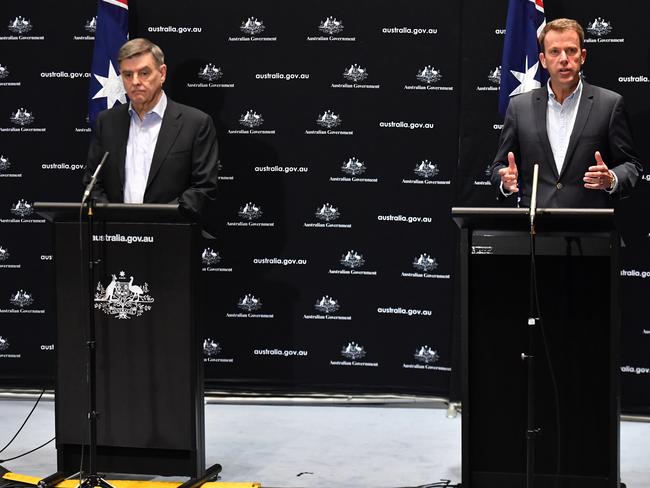
Mr Tehan said the economic crisis caused by COVID19 could be turned into an opportunity for those now forced to reconsider their careers.
“If life gives you lemons, make lemonade. And what we want to do is provide an opportunity for all those people who have had their lives turned upside down by the coronavirus to re-skill or look at different career options,” he said.
“If our people can seize this opportunity, if our universities can seize this opportunity, we will be able to ensure that education remains one of the foundations which will build this nation into the future.”
The cost to study short, online courses universities and private will be reduced from the beginning of May and initially run for six months.
The government is also providing a six-month exemption from the loan fees associated with FEE-HELP and VET Student Loans in a bid to encourage full-fee paying students to continue
their studies.
AUSSIES RETURN FROM OVERSEAS
Long-stuck Aussie travellers flown from Peru, Uruguay, India and Nepal are trickling through Sydney and Melbourne before being shuttled to hotels for two weeks of quarantine.
Nearly 100 of them spent weeks stranded on an Antarctic cruise ship off the coast of Uruguay while another 63 left Kathmandu on a Canadian government-backed flight.
“Thanks also to (the) Canadian High Commission in New Delhi and Canadian Govt. To do what you did remotely … hats off,” Australian Ambassador to Nepal Peter Budd tweeted on Saturday.
More than 100 Australian passengers from the Antarctic cruise ship Greg Mortimer have arrived in Melbourne from Uruguay.

Victoria’s Deputy Chief Health Officer Dr Annaliese van Diemen said up to 70 per cent of people – an estimated 80 people – on-board the Melbourne flight could have coronavirus.
Dr Annaliese van Diemen said preparations are being made to test and quarantine those on board repatriation flights from Peru, Delhi and Uruguay.
“Everybody will be assessed when they get off the flight by a medical flight by a medical team,” Dr van Diemen said.
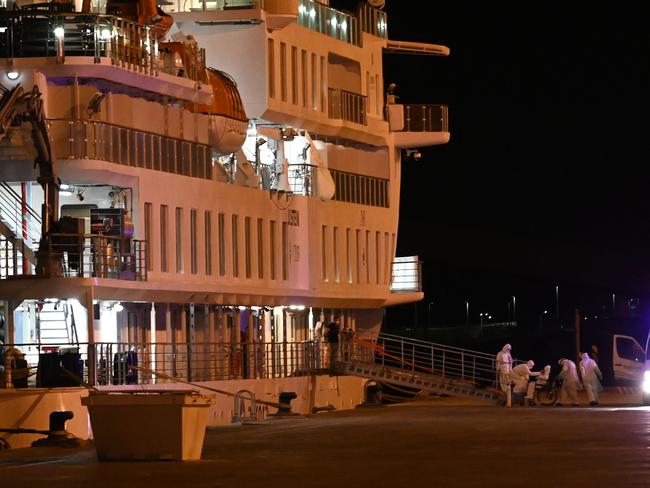
“If that assessment determines they need testing, then yes they will be tested.”
Passengers will go into 14 days of isolation in a hotel.
In the US, the death toll surged towards 20,000 after more than 2000 people died in a day.
The global infection toll early on Sunday was 1.75 million with nearly 110,000 deaths.
THOUSANDS TO LEAVE QUARANTINE
Thousands of recently returned travellers will be released from the guarded quarantine they have spent the past fortnight in.
Australia’s daily infection rate was increasing at least 15 per cent every day when they entered but it has now dropped to less than two per cent.
Australia’s total cases sits at 6302 cases, with 56 people having died from the virus.
The source of nearly half those cases, NSW, on Saturday recorded its fifth day with fewer than 50 new infections.
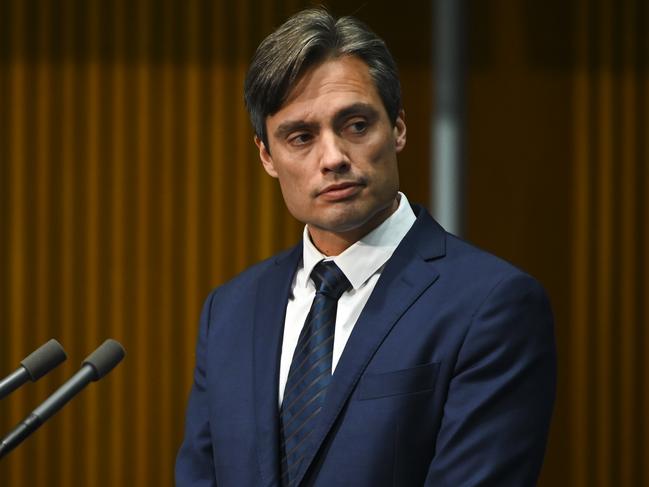
Some 240 people are in hospital nationwide, with 80 of those in intensive care units.
One-third of cases have been locally acquired.
Deputy Chief Medical Officer Nick Coatsworth has conceded the restrictions have made it difficult for Australians wanting to celebrate Easter or Passover. “We’re very happy with what we’re seeing Australians do around Easter,” he said. “We have got to remember that this is a holiday time, we’ve asked Australians to break a lifelong habit with this weekend.” He didn’t think isolated cases of poor behaviour was cause for a widespread concern, but wouldn’t speculate if an potential spike in cases down the track could be attributed to Easter.
“What we are aiming for is that the news continues to be good.” Efforts are also ongoing to return hundreds of passengers from cruise ship Vasco Da Gama to their home states.
They were forced to quarantine on Western Australia’s Rottnest Island but, despite being cleared, are now stranded in Perth due to a lack of flights.
US TAKES THE UNWANTED LEAD IN NUMBER OF COVID-19 DEATHS
The US now has the largest official reported national coronavirus death toll in the world.
After more than 2000 Americans died in just 24 hours – a horrific figure not yet seen anywhere else – the US tally of more than 19,700 dead surpassed Italy’s tally of about 19,500.
Italy, with a population less than a fifth of the size of the States, has a far worse death rate.
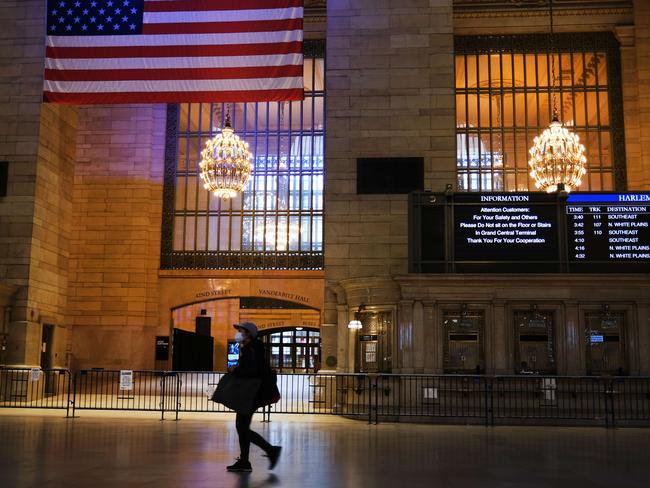
But the US also has by far the highest number of reported COVID-19 infections at 503,594, although western countries are highly sceptical about the numbers being reported in China which has made disputed claims to have contained the virus.
Spain has the second-highest number of cases with nearly 160,000.
Figures released by Johns Hopkins University show 2108 people died in the US overnight, while the UK’s death toll approached 10,000 with nearly 2000 dead in just 48 hours.
Early today, the global infection tally was nearly 1.75 million with 108,000 deaths across the world.
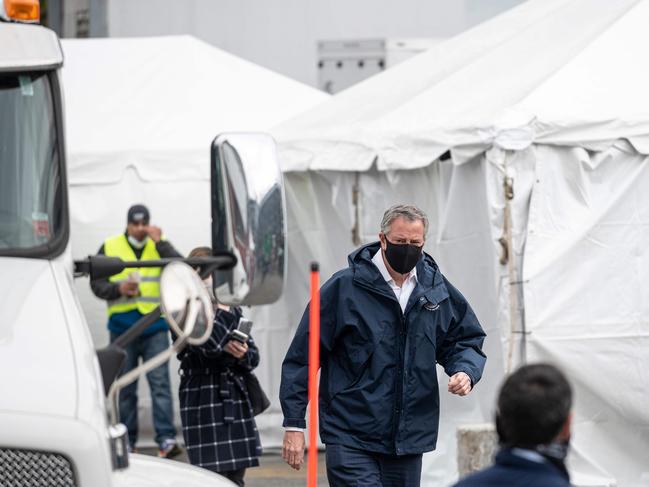
That’s far more than any other country. Spain has the second-most cases with 158,273.
At least 18,777 people have died making the US second only to Italy, which has reported 18,849 deaths.
New York remains the epicentre of the outbreak in the United States, with 94,409 confirmed cases and 7067 deaths.
While the White House claimed the spread of the virus was starting to level off, the news indicated that the virus had not yet reached its peak in America.
UK HAS ANOTHER SHOCKING DAY
The coronavirus death toll in the UK has risen to 9875, with the youngest victim just 11 years old.
That is a leap of 917 in the last 24 hours as the country remains in lockdown battling against the virus.
Almost 2000 Brits have now died in hospital in the past 48 hours after catching the virus.
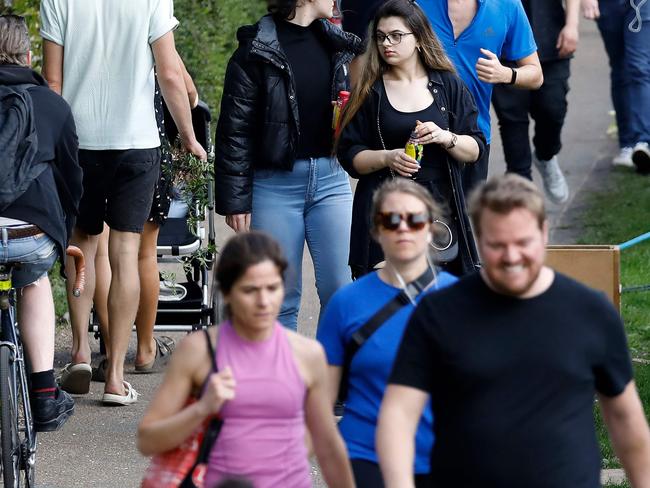
The death toll continues to climb as officials believe new COVID-19 infections will peak on Easter Sunday and the NHS is braced for a “tsunami” of cases this weekend.
The total number of UK cases is now 78,991, with 5234 new cases in the past 24 hours.
NHS England said this afternoon the 823 more who have died in England were between 11 and 102 years old.
And 33 of those patients – between 29 and 94 years old – had no known underlying health condition.
MEDICARE TO EXPAND TO ‘SUSTAIN GAINS’
Australia’s Federal Deputy Chief Medical Officer Nick Coatsworth has said Medicare was being expanded to support telehealth services, as Australia must “sustain the gains” it has made in beating coronavirus.
However health and social restrictions could remain for another six months as authorities fear a second wave of COVID-19 infections as winter closes in.
Dr Coatsworth said Saturday it was too early to lift restrictions in place on social distancing.
“I think another way to put it might be that it was very fast into the restrictions and they were very widespread, and it needs to be very nuanced on the way out,” he said.
“So you need to be very clear about if you’re lifting a restriction, that you have done everything you can to try and understand exactly what the implications of that lifting would be before you actually implemented. So whether it is slow or not, needs to be very targeted and focused and that is how it going to be I suspect.”
He said there is no concern about non-COVID-19 medication shortages and there is no direct concern about an increased spread of the virus in winter, unlike other respiratory illnesses, like influenza.
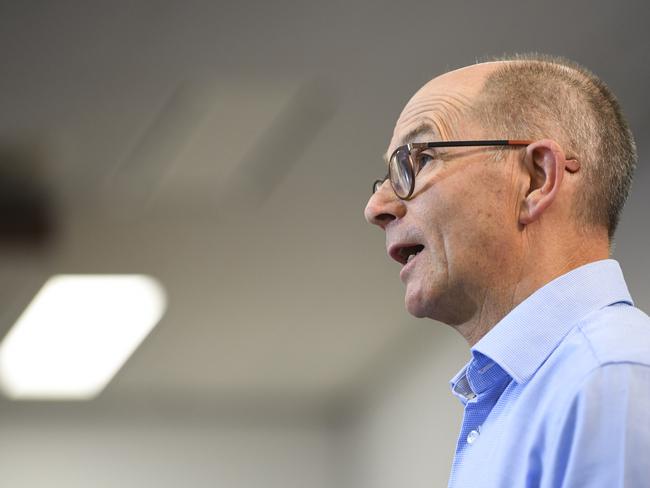
His comments come three months after Australia recorded its initial case of COVID-19, and our Deputy Chief Medical Officer Paul Kelly has also said the disease could “die out” in areas across the country in a matter of weeks.
After Prime Minister Scott Morrison and his National Cabinet urged Australians to stay at home and not travel during the Easter break in a bid to further ‘flatten the curve’, the struggle other countries have had, such as South Korea, with a second influx of the virus, could also happen here, it has been warned.
“At this stage, we’re only 14 weeks into this virus. If we were able to look at people that might have been exposed … or indeed were diagnosed with the virus and see whether they are immune now, that would be very short-term immunity still,” Professor Kelly said, according to The Australian.
“In terms of the virus dying out in certain parts of Australia, that would be a great achievement. It does bring with it a challenge, of course — it would mean that most of us would not have been exposed yet, so we would remain susceptible to the virus if it was to be reintroduced (to an area).”
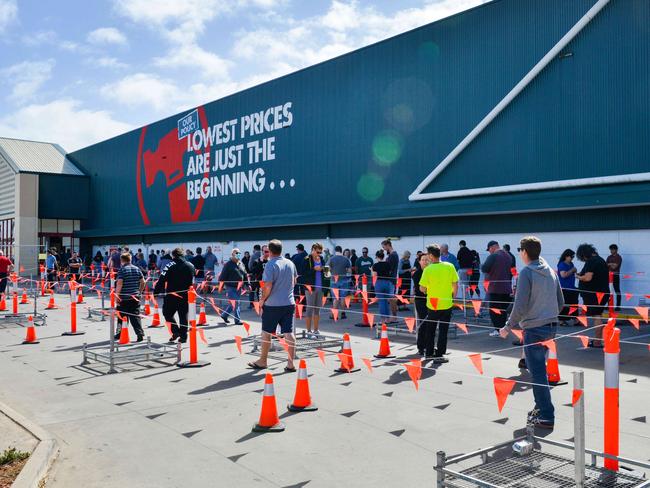
However the federal government has said social distancing rules were unlikely to be changed over the next six months, unless on the advice of medical authorities.
The latest warnings throw further doubt over the NRL’s plans to restart their competition next month.
MORE: Intense anguish of Boris Johnson’s pregnant fiancee
As of 6am on Saturday, there were 6238 confirmed cases of COVID-19 in Australia from more than 338,000 tests. There were 86 new cases recorded in the last 24 hours. A man in his 80s has died from the coronavirus in a Victorian hospital while a woman in her 90s is NSW’s latest victim, taking the national toll to 56.
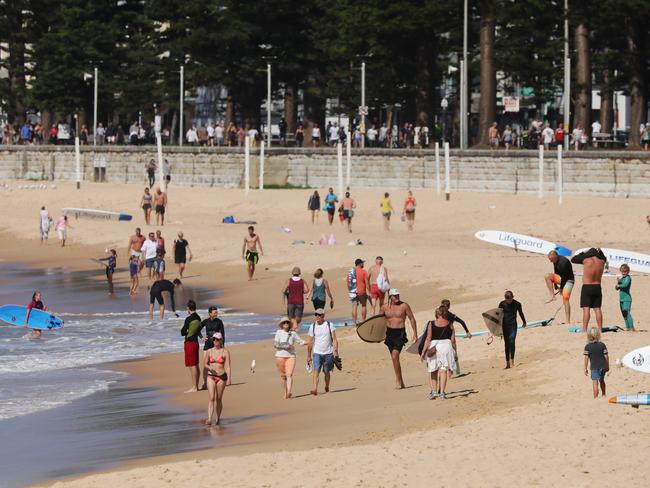
Meanwhile Reuters reports, mainland China has reported 46 new coronavirus cases on Saturday, including 42 involving travellers from overseas, up from 42 cases a day earlier. China’s National Health Commission said in a statement that 34 new asymptomatic coronavirus cases were also reported, down from 47 the previous day. Mainland China’s tally of infections now stands at 81,953, while the death toll rose by three, to 3339.
China's figures have been met with much scepticism from around the world, including from US President Donald Trump.
UK RECORDS 900+ DEATHS FOR SECOND DAY
Meanwhile, the daily death toll in the UK soared to 980 deaths Friday local time, breaking Spain’s record daily death toll.
Another 917 people died on Saturday, bringing the UK death toll to at least 9,875. NHS England said an 11-year-old had become one of the UK’s youngest victims of the outbreak.

The British health system is battling to keep up with the number of sick and dying patients in overcrowded and understaffed hospitals as scientists, including Australians, race to develop a vaccine that could provide widespread relief.
Beyond hospital walls, scenes were also far from normal across the UK as churches remained closed on Good Friday, marking first time in 807 years that Anglican churches have not hosted Easter services.
The total number of cases has risen to 73,758 with the total death toll for England now 8958.
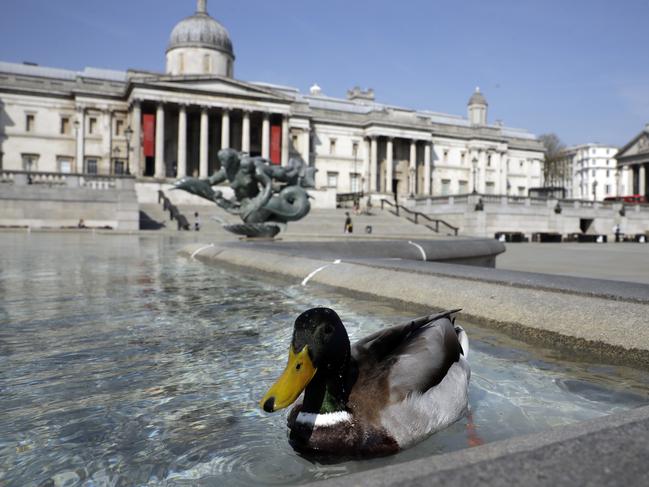
Northern Ireland recorded ten new deaths, bringing their total to 92, while Wales’ toll stands at 315 after another 29 people died overnight.
The NHS is said to be bracing for a “tsunami” of cases over Easter weekend.
Scientists predict that the UK death rate will start falling in a fortnight if people continue to practice social distancing and remain at home.
A Government source said: “They will only consider easing measures once deaths start to go down. We think that is three weeks away.”
GLOBAL DEATH TOLL EXCEEDS 100,000
As the global death toll from the virus surges past 100,000 and New York State again records a grim daily death toll, there is some positive news: the number of virus patients on ventilators in New York has dropped for the first time.
But New York State governor Andrew Cuomo has warned of a spiking death toll in coming days, as patients who have been on ventilators for a number of days and not improved are likely to succumb to the virus.
New York State has 170,512 cases and 7,844 confirmed deaths as of Saturday local time.
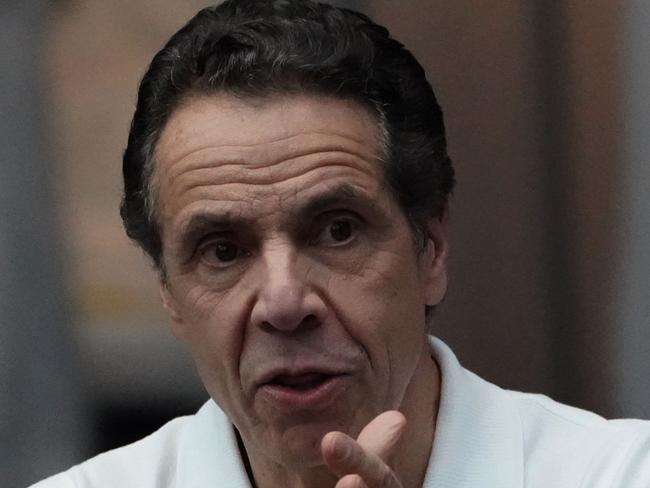
“The death toll is going up and that is very painful, but the good news, if you will, is that there is this plateauing of new cases,” he said.
Mr Cuomo warned against people taking the slowing number of cases as a reason to return to their normal activities, however.
“I keep pushing the stay at home, stay at home, don’t get complacent just because the situation is not getting worse it doesn’t mean that it’s going to get better on its own and that you can relax.,” he said.
“The numbers are a consequence of our daily actions.”
Reopening the economy too soon could lead to a second wave of coronavirus, Mr Cuomo warned.
“When you take just a cursory review, you see caution signs,” Mr Cuomo said, referencing China, Hong Kong, Singapore and Italy.
US MULLS ‘IMMUNITY CERTIFICATES’
The US is considering issuing “certificates of immunity” to allow people to get back to work and move around in the community as the planet marked the grim milestone that 100,000 people have now been killed by COVID-19.
Dr. Anthony Fauci, a key member of President Trump’s coronavirus task force, said certificates of immunity for Americans have been discussed during White House meetings.
Dr Fauci said the idea that people carry such certificates to prove they have tested positive for antibodies might “have some merit under certain circumstances.”
“It’s one of those things that we talk about when we want to make sure that we know who the vulnerable people are and not,” Mr Fauci said, adding that the antibody tests will be available soon.
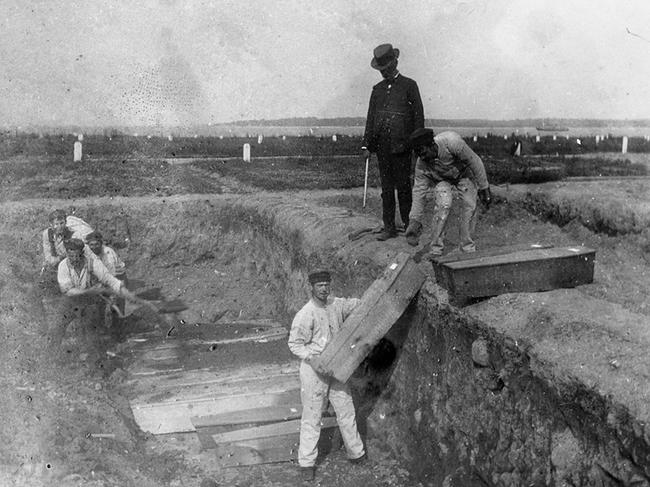
At the latest While House coronavirus task force meeting, infectious disease expert Dr Fauci said that “a rather large number of tests” that could show whether a person was recently exposed to the coronavirus will be available within a week.
An antibody test would say “that you were infected and if you’re feeling well you very likely recovered,” Dr. Fauci told CNN.
These tests would determine how deeply the virus has spread in the country and also whether previously infected people were vulnerable to reinfection, something “particularly important to healthcare workers”, Dr Fauci said.
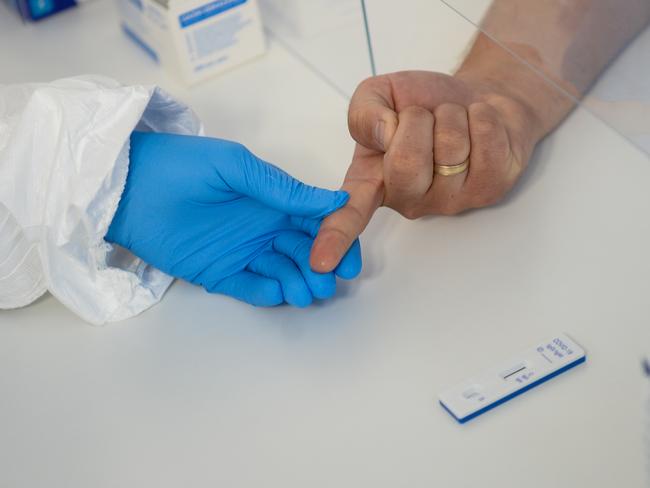
As some of Donald Trump’s top economic officials suggested that the US economy could start to reopen for normal business in May, Dr Fauci has said that it’s too early to relax restrictions.
Mr Trump is pushing for a return to business as usual as soon as possible.
“Hopefully we’re going to be opening up … very, very, very, very soon, I hope,” he said at a White House briefing.
In an interview with CNN as the Easter weekend commenced in the US, Dr. Fauci warned against a premature easing of restrictions.
“Now is no time to back off,” he said.
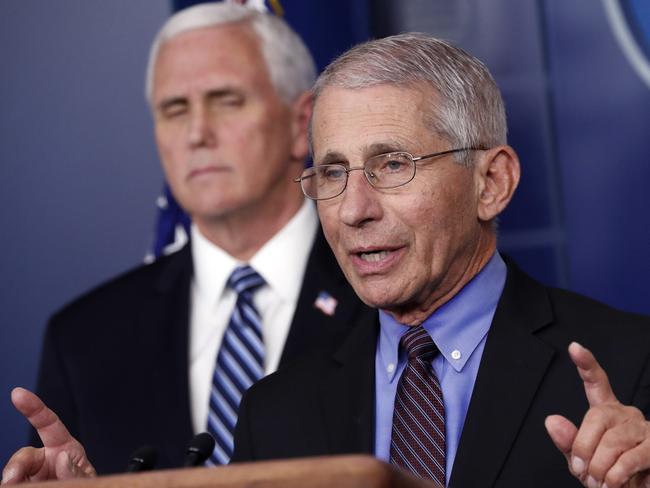
“Obviously we’re looking for the kinds of things that would indicate that we can go forward in a gradual way to essentially reopen the country to a more normal way,” Fauci said, adding that would depend on a number of factors.
House of Representatives Speaker Nancy Pelosi and long-time Trump rival also warned the President against a premature return to norma.
“I would hope that the scientific community would weigh in and say, ‘You can’t do this, it is only going to make matters worse if you go out too soon,” Ms Pelosi said in an interview.
New York City officials trying to process a rising coronavirus death toll have been forced to ramp up burial operations at its public cemetery from one day a week to five.

Aerial images showed 40 caskets lined up for burial at Hart Island — the same day New York Governor Andrew Cuomo reported 799 new deaths across the state. Normally, about 25 bodies a week are interred there, mostly for people whose families can’t afford a funeral, or who go unclaimed by relatives.
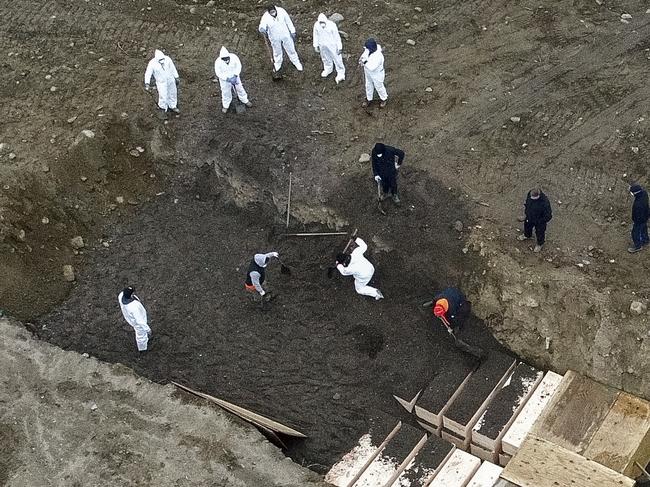
“The pictures of our fellow New Yorkers being buried on Hart Island are devastating for all of us,” Mayor Bill de Blasio said in a tweet Friday local time. “Remember, these are human beings. These are neighbours we’ve lost.”
“For decades, our city has buried people on Hart Island when there is no one else to make burial arrangements. It’s a tragic reality,” he continued.
“The heartbreaking numbers of deaths we’re seeing means we are sadly losing more people without family or friends to bury them privately,” Mr De Blasio added. “Those are the people who will be buried on Hart Island, with every measure of respect and dignity New York City can provide.”
Mr de Blasio announced on Saturday local time that New York City’s schools will remain closed for the rest of the academic year.
US DEATH TOLL OVERLOOKS THOSE WHO HAVE DIED AT HOME
In New York, a staggering number of people who have died at home may also have been carrying the virus, raising fears that the official death toll does not reflect an even grimmer reality.
1125 patients were pronounced dead in their homes or on the street in the first five days of April, according to Fire Department data, a whopping eight times the amount of deaths recorded during the same period last year.
Because those pronounced dead are not being tested for the virus, it’s impossible to say how many of them may have died from complications related to COVID-19, though one could assume it’s been a major factor.

“The driver of this huge uptick in deaths at home is COVID-19,” Mayor Bill de Blasio said. “And some people are dying directly of it, and some people are dying indirectly of it, but it is the tragic ‘X’ factor here.”
Nearly 120 morgue workers and soldiers have been working around the clock to retrieve up to 280 bodies daily, many of whom may have been infected with the virus but haven’t been counted in the official toll.
New York City remains the epicentre of the virus in the US with more than 160,000 confirmed cases.
US OPEN SITE BECOMES MAKESHIFT HOSPITAL
New York City Mayor Bill de Blasio celebrated the opening of the National Tennis Center in Queens as a hospital Friday and said the facility may be used to quarantine recovering patients to prevent a resurgence of the coronavirus once the city is past the acute crisis phase of the pandemic.
“You need a lot of capacity to quarantine people and isolate people to make that work,” de Blasio said.
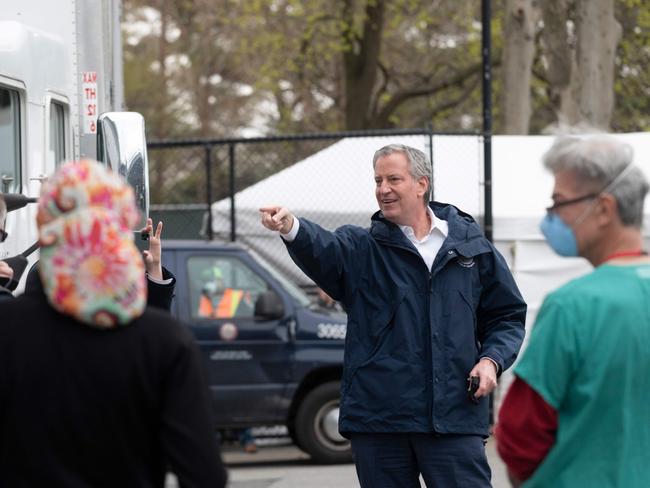
“Facilities like these, if they’re not needed for medical, will be turned into quarantine and isolation facilities to help people get through their own experience with the disease while making sure we don’t infect the other members of their family or other people in their life.” For now, the home of the US Open has been converted into a 470-bed hospital intended to relieve the burden from the overtaxed Elmhurst Hospital.
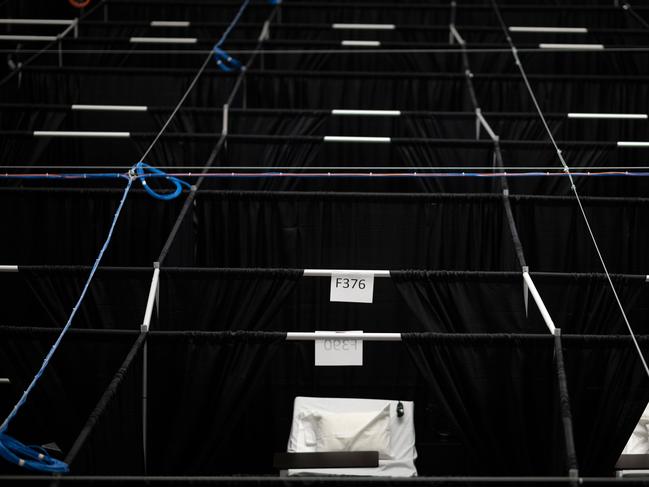
The new temporary hospital will be staffed with doctors and nurses from around the country who have travelled to New York to help treat COVID-19 patients.
They came here because they love New York City and they wanted to help New York City in our hour of need,” de Blasio said.
It was “very, very moving,” he said, to meet a woman who came all the way from Alaska.
INFECTED TIGER RECOVERING
A Bronx Zoo tiger that contracted the coronavirus is continuing to get better, as are six other tigers and lions that showed similar symptoms, the zoo said Friday.
The big cats “are behaving normally, eating well, and their coughing is greatly reduced,” the zoo said in a statement, adding that none of its other animals have developed symptoms.
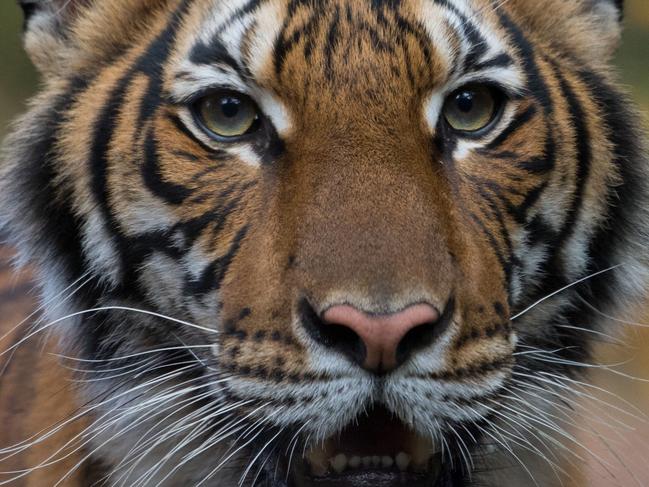
The test result, announced Sunday local time, marked what’s believed to be the first confirmed coronavirus case in an animal in the US or a tiger anywhere, according to the zoo and the US Department of Agriculture. Eleven days after the zoo closed to the public because of the outbreak, a 4-year-old Malayan tiger named Nadia started showing signs of illness on March 27.
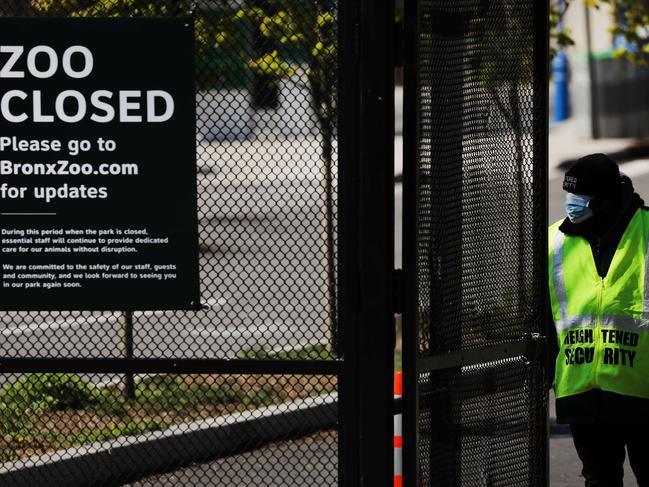
Three other tigers and three lions later began coughing, and in some instances wheezing or losing their appetites.
The zoo believes the animals were exposed by one or more keepers who had the virus but weren’t showing symptoms at the time.
It’s not known exactly how the infection might have passed from person to cat.
APPLE, GOOGLE JOIN FORCES TO FIGHT COVID-19
Apple and Google launched a major joint effort to leverage smartphone technology to contain the COVID-19 pandemic.
New software the companies plan to add to phones would make it easier to use Bluetooth wireless technology to track down people for who may have been infected by coronavirus carriers.
The idea is to help national governments roll out apps for so-called “contact tracing” that will run on iPhones and Android phones alike.
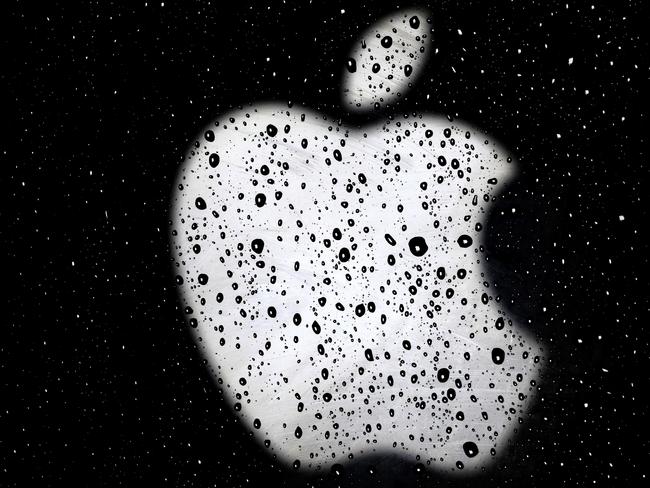
Software developers have already created such apps in countries including Singapore and China to try to contain the pandemic.
In Europe, the Czech Republic says it will release such an app this month.
Britain, Germany and Italy are among other countries developing such apps.
Privacy and civil liberties activists have warned that such apps need to be designed so governments cannot abuse them to track their citizens.
Apple and Google plan say user privacy and security are baked into the design of their plan.
Security experts also note that technology alone cannot effectively track down and identify people who may have been infected by COVID-19 carriers.
Such efforts will require other tools and teams of public health care workers to track people in the physical world, they say.
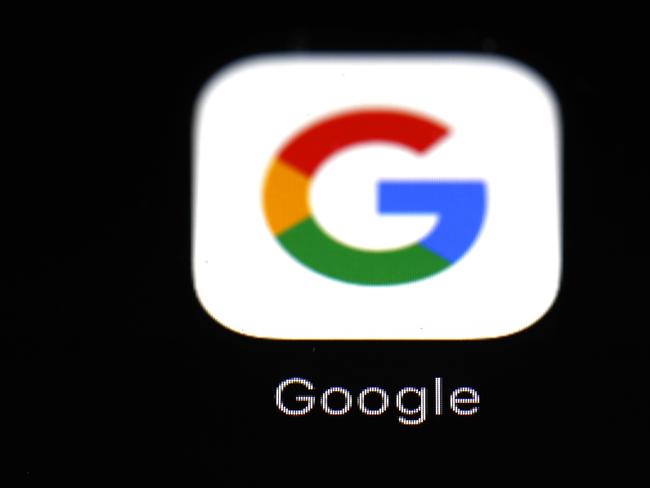
In South Korea and China, such efforts have included the use of credit-card and public-transit records.
Given the great need for effective contact-tracing – a tool epidemiologists have long employed to contain infectious disease outbreaks – the companies will roll out their changes in two phases.
In the first, they will release software in May that lets public health authorities release apps for both Android and iOS phones.
In coming months, they will also build this functionality directly into the underlying operating systems.
On Friday, the companies released preliminary technical specifications for the effort, which they called “Privacy-Preserving Contact Tracing.”
BORIS JOHNSON OUT OF INTENSIVE CARE
Boris Johnson gave Britain something to cheer about as he was moved out of intensive care on Friday in “extremely good spirits.”
The Prime Minister, 55, responded to treatment, so was sent back to a general ward just days before Easter.
His pregnant fiancee Carrie Symonds was so excited she posted an image of a rainbow with 26 hand clapping emojis.
The news arrived just before Britain stopped to applaud its health workers — a heart warming, now weekly tradition.
“The Prime Minister has been moved this evening from intensive care back to the ward, where he will receive close monitoring during the early phase of his recovery,” a Downing Street spokesman said.
“He is in extremely good spirits.”
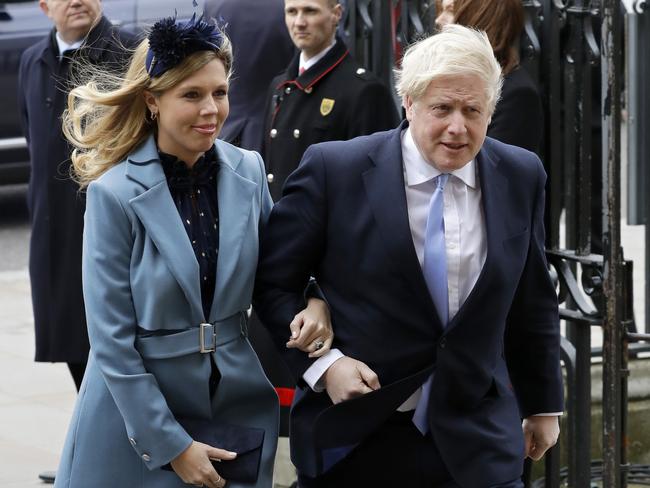
Mr Johnson had spent three nights of the four nights he has so far been in hospital in intensive care.
He was expected to remain in hospital and was likely to be off work for several weeks once he was released.
The UK was due to review its lockdown on Monday, but any decision has now been delayed until next week.
It was expected that stand-in Prime Minister Dominic Raab would wait to get Mr Johnson’s views before making any major calls.
AUSSIES AMONG SCIENTISTS IN RACE TO DEVELOP VACCINES
There are now 115 vaccines under development to prevent COVID-19, according to a wide-ranging worldwide review by the journal Nature.
Seventy eight of these vaccine candidates are the subject of active work, while there is no public information on whether work is ongoing on a further 37.
Five vaccines are currently being tested on humans and more are being tested on animals as vaccine development is proceeding at a pace never-before-seen in the history of medicine.
A vaccine made by Moderna was injected into healthy people last month to check it was safe to use and Inovio injected humans with its vaccine candidate this week.
Shenzhen Geno-Immune Medical Institute has begun human clinical trials on two vaccines and Cansino Biologicals has one vaccine in human trials.
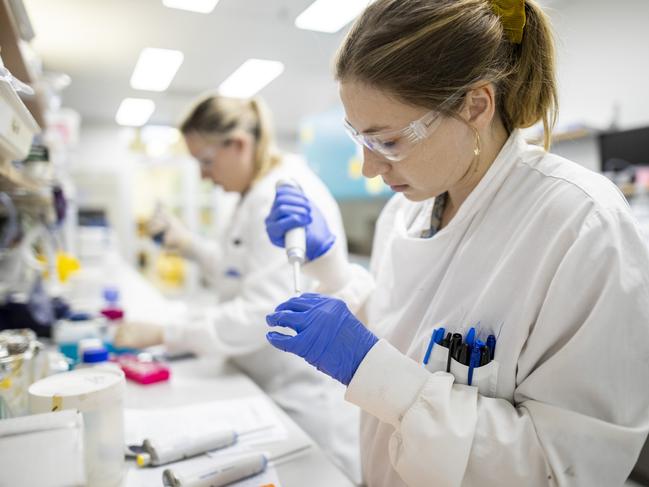
Inovio’s vaccine is also being trialled on ferrets at the CSIRO along with a vaccine developed by scientists at Oxford University.
The University of Queensland announced this week its vaccine candidate was being sent to a secure lab in The Netherlands for testing on the live vaccine and human trials could begin after July.
And Australia’s CSL is working on a blood plasma therapy for COVID-19 that would deliver antibodies from people who have recovered from the virus from people who are battling the virus.
Novavax said it will begin human trials of its vaccine in mid-May.
Stem-cell company Mesoblast has already given its experimental stem cell therapy to patients in the US with promising results and a clinical trial is about to commence.
Pharmaceutical giant Pfizer is testing several potential treatments for COVID-19.
Meanwhile, international researchers have tested 10,000 compounds looking for a COVID-19 treatment and identified six potential treatments.
University of Queensland researcher Professor Luke Guddat who took part in the study said the project targeted an enzyme on the virus that played a role in controlling its replication.
“We’re particularly looking at several leads that have been subjected to clinical trials including for the prevention and treatment of various disorders such as cardiovascular disease, arthritis, stroke, atherosclerosis and cancer,” he said.
AUSTRALIA ‘ON THE CUSP’ OF A BREAKTHROUGH
Australians have been warned to “stay at home” over the Easter long weekend and obey strict social distancing rules as the coronavirus crisis continues.
It came as Deputy Chief Medical Officer Professor Paul Kelly revealed Australia is “on the cusp” of a position in which COVID-19 may begin to die out locally – as long as shutdown measures remain in place and people continue to socially distance.
Professor Kelly said the effective rate of infection in Australia, the “R0”, was somewhere between one and two, meaning every infected person infects between one and two people.
“Where you want to be is below one – so less than one other person being infected after a person themselves has the infection,” Professor Kelly said in Canberra on Friday.
“One you get to that point the virus dies out or the epidemic dies out, so at the moment we’re probably on the cusp of that in Australia … whether that’s where we’re going to be in several weeks or months remains to be seen.”
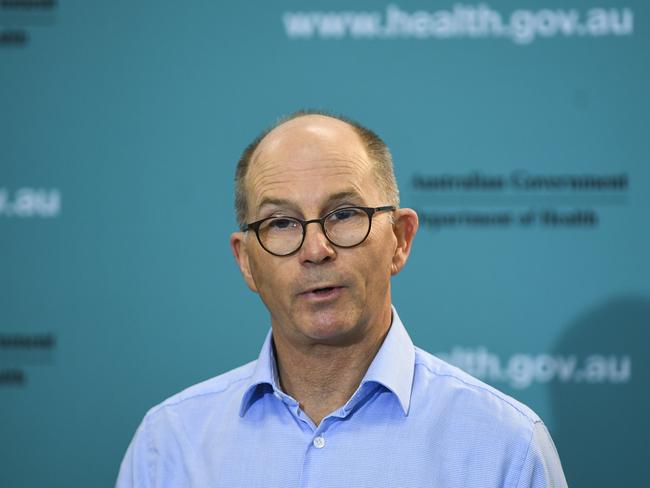
He said Australians would remain susceptible to coronavirus even if the virus was successfully eliminated from certain communities.
The key message was still “to stay at home” this long weekend.
“This is not time for us to be changing the rules, in terms of social distancing and the other things we have done in society over recent weeks,” Professor Kelly said.
“It is a time to consolidate those gains, and then to consider what might happen in the future, but at this time, the stay-at-home message is really important.”
Health authorities are warning against complacency after encouraging figures showed the infection rate rising just 1.8 per cent over the past three days.
“There’s only a couple of thousand of those 6000 cases (that) are actual local transmission,” Professor Kelly said.
“So, we need to see what happens with those and to learn from other countries that have going through a much more difficult time with much larger epidemics to see what happens as they pass that peak and see what happens from there.”
When asked about the possibility of COVID-19 immunity in the broader community, Professor Kelly said it was still “only very early”.
“That would be a very important thing to know. At this stage, we’re only – I calculated this week – 14 weeks into the virus,” he said.
“Only the first cases in Australia were in mid-to-late January. So it’s only very early.”
As at Friday night, there were 6152 confirmed cases in Australia and 54 deaths (22 in NSW, 13 in Vic, four in Qld, six in WA, four in Tas, two in ACT, three in SA).
Of the deceased, 15 were passengers on the Ruby Princess cruise ship.
Some European countries including Austria and Denmark have announced plans to ease some restrictions, but doctors in Spain have warned against removing them too soon for fear of a second wave of infections.
The lockdown was likely to extend until mid-May, with schools unlikely to open again until the next school year in September, political sources in London told News Corp Australia.
Any decision on getting life back to normal would be guided by research into how many people actually have the virus but displayed no symptoms.
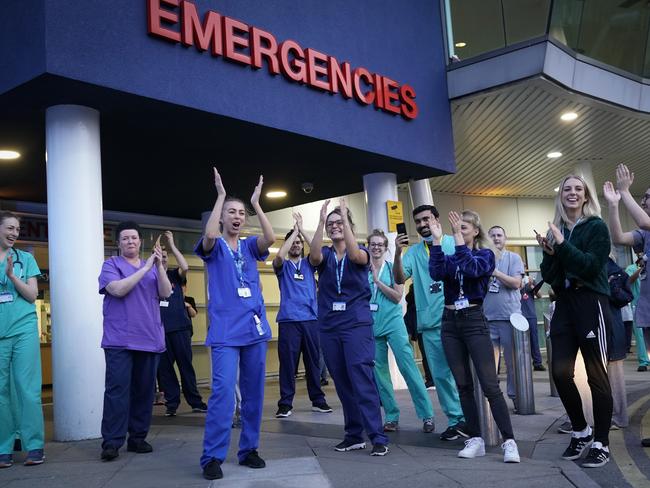
Sir Patrick Vallance, the UK’s chief scientific adviser, said there could be up to 6.6 million Brits who have the virus.
He said that the government was trying to do antibody testing to find out the overall infection rate, which he said could be under 10 per cent of the country’s 66 million people.
“I can’t tell you what the answer is going to be, we need to do the experiment, find out the answer,” he said.
“But from what I’ve seen from other places, it’s mainly single digit numbers and it could be a bit higher in some places.”
The UK’s hospital system has been able to cope so far, with cases for intensive care only doubling every six days.
There are also new hospitals online, with 4000 beds made available at the new Nightingale Hospital at a convention centre in East London.
The UK would also consider how the lockdown impacts on other health problems, including job losses and poverty and other patients not receiving treatment, when it makes a decision on easing restrictions.
LATEST FROM EUROPE
In France, the country’s only aircraft carrier has confirmed 50 cases of the virus on-board the boat. Three of the sick have been transferred from the Charles de Gaulle to a French hospital for treatment while medics stay on board the boat to track infections and stem the spread of the virus among the 1700 crew members. Fifty of the 66 crew tested for COVID-19 returned a positive result.
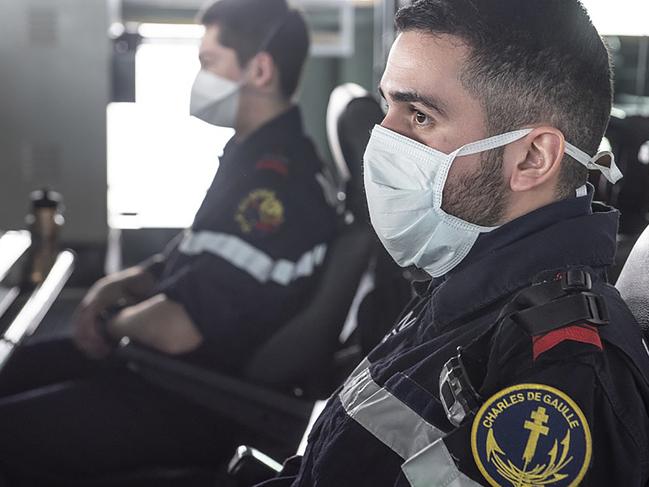
The situation echoes that aboard the US carrier TSS Theodore Roosevelt, where the captain was fired after writing a letter pleading for his crew to be allowed to disembark and be quarantined. Over 150 crew members on that boat had tested positive for the virus.
The Charles de Gaulle was on mission in the Atlantic Ocean when a medic team was flown out to the boat following suspicions of an outbreak.
At the Notre Dame cathedral in Paris, a Good Friday ceremony was held without a crowd.
In Israel, a cell-therapy treatment had a 100 per cent success rate in reducing coronavirus symptoms in seriously ill patients.
The treatment will now be sent to clinical trials amid discussions with health authorities in Europe and the United States on how it could be rolled out if successful.
And a separate group of Israeli scientists have claimed they could have a vaccine ready within weeks and available in three months.
The vaccine was based on previous work for a treatment for bronchitis.
The news has given some glimmers of hope in Israel, which was also planning to ease its lockdown.
Scientists from the Galilee Research Centre were behind the vaccine.
“Let’s call it pure luck,” Dr. Chen Katz told the Jerusalem Post.
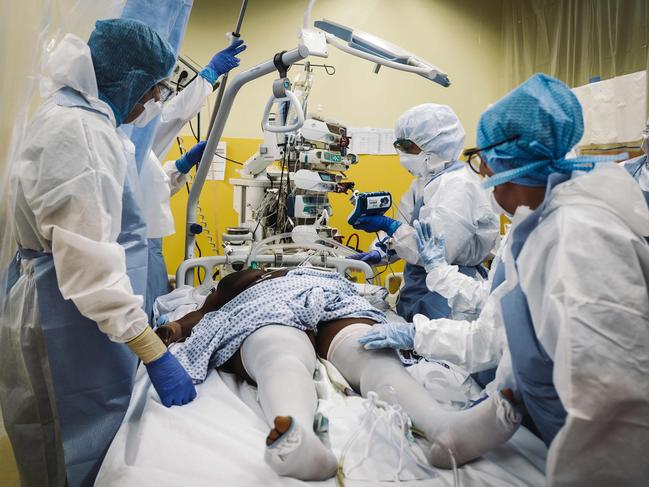
“We decided to choose coronavirus as a model for our system just as a proof of concept for our technology.”
The plasma treatment trial was for a drug from manufacturer Pluristem, and was tested on patients at three different hospitals.
The treatment reduced the body’s immune system over-reaction, which has been causing pneumonia and other complications.
Four of the patients were at risk of organ failure when they received the treatment.
Italyreached another grim milestone in its coronavirus battle, with the 100th doctor dying from the disease.
The country’s doctors’ association confirmed the news Friday, with the figure including retired doctors who had volunteered to work.
“We can no longer allow our doctors, our health workers, to be sent to fight without any protection against the virus,” the association’s president Filippo Anelli said on its website.
“It is an unfair fight,” he added.
At least 30 nurses have also died, with medical workers making up 10 per cent of all infections in Italy.
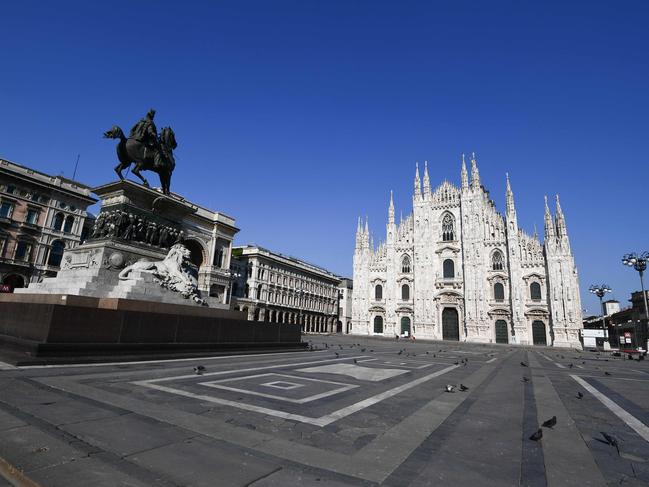
Italian Prime Minister Giuseppe Conte has extended the country’s lockdown to May 3.
Mr Conte has also been fighting with European Union countries to take on some of Italy’s coronavirus debts.
He warned the EU was at risk of failing if they did not share the burden.
“If we do not seize the opportunity to put new life into the European project, the risk of failure is real,” he told the BBC.
And the Easter weekend in the traditional Catholic country will be unrecognisable, with all shops closed on Sunday and Monday.
Checkpoints will be set up across the country to stop people moving.
In Norway, shoppers are driving to Sweden where there are less restrictions to go shopping for Easter.
Locked down Norwegians have still been travelling across the border even though they will have to go into quarantine once they return.
Police have been registering cars and finding people who breach the quarantine rules.
It comes as a new app will be rolled out in Norway after Easter to alert people if they have been in contact with a coronavirus sufferer for more than 15 minutes.
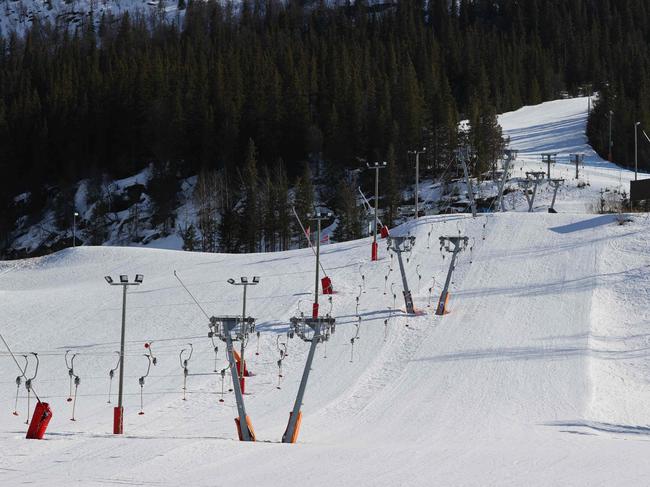
The voluntary app will not say when and where the infected person was for privacy reasons, but it was expected to be another tool in the attempt to lift lockdown restrictions.
Norway’s Prime Minister Erna Solberg said this week the country had controlled the virus and it would start opening the country “little by little” this month.
Schools will open from April 20 but working from home was likely to continue for several months.
In Spain, a nurse was evicted from her flat on the same day that she received the news that she had contracted coronavirus.
Clara Serrano, 31, had moved to Madrid and rented a room in a shadehouse as a base to help at a hospital.
But when she came down with COVID-19 a week after working on the wards, the landlord kicked her out.
“I was very scared. I tried to explain to him that I would leave but it might not be immediately but he did not listen to me,” she told Eldiario.
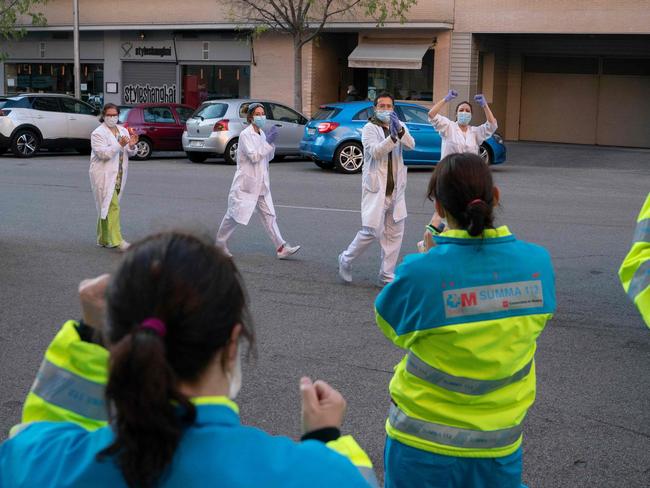
“He did not stop putting pressure on me on the phone and he did not stop telling me that I had to leave immediately.
“I understand the dread, the fear in crisis situations, but things could have been done differently. The man maybe thought he was risky because of his age but we could have talked about it.”
It came as Spain’s Prime Minister Pedro Sanchez said the worst of the outbreak had passed, with 152,446 infections and 15,238 deaths.
“The fire starts to come under control,” he said.
In Poland, a priest has been fined the equivalent of 2200 euro ($A3795) for celebrating Palm Sunday mass for 60 people.
Current restrictions in Poland limit public gatherings to no more than five people. Cycling and long walks are also forbidden.
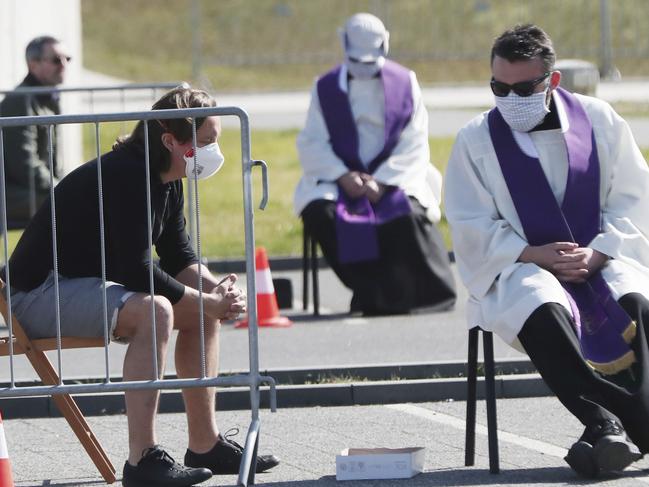
Originally published as Australia’s COVID-19 death toll rises in NSW, SA, Tasmania amid warning over returning passengers
